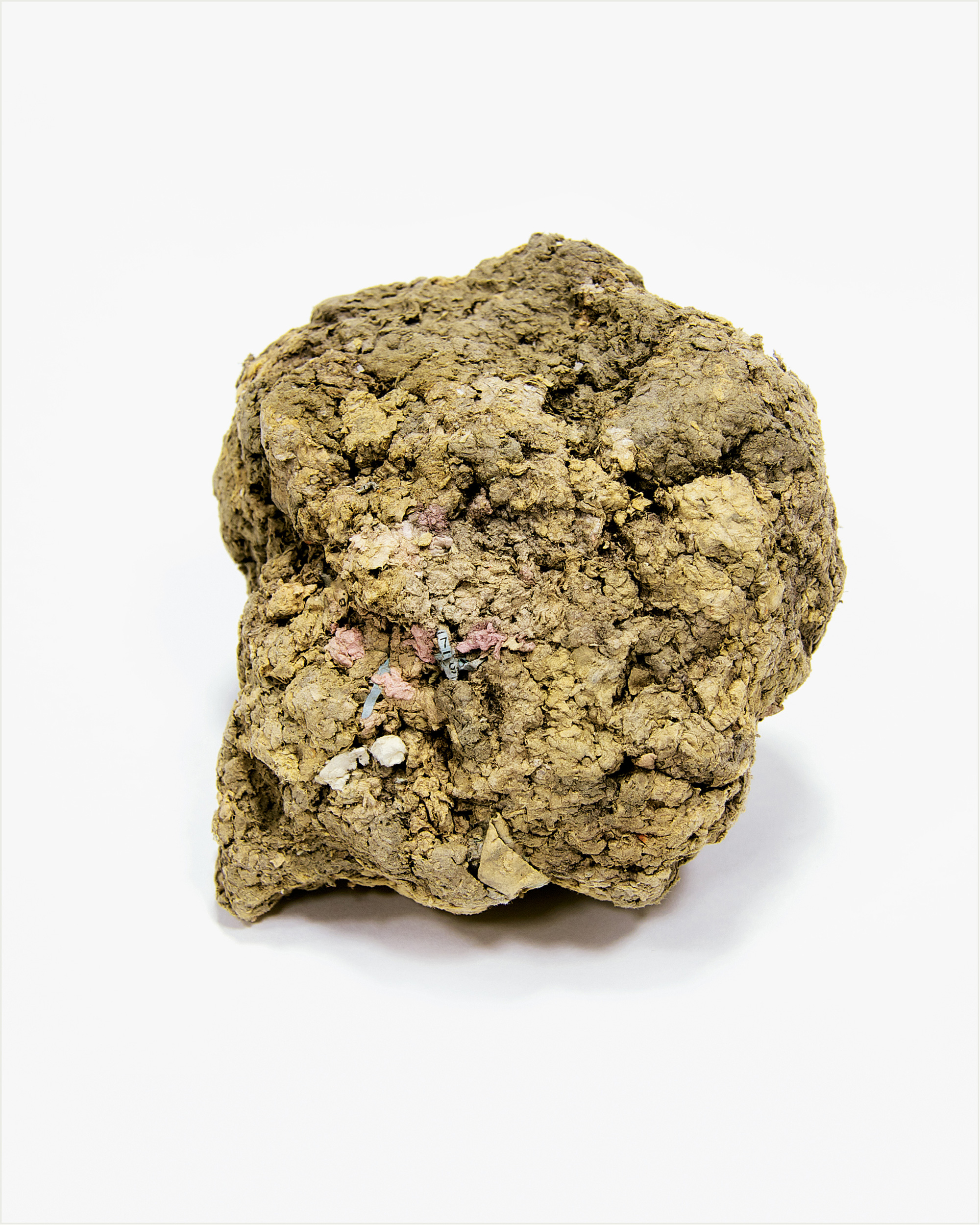Leftovers / Rock, Paper, Scissors
What the Stasi left behind
Sebastian Cichocki
“Leftovers” is a column that investigates the cultural significance of detritus.
In his studio in Kreuzberg, a neighborhood in former West Berlin, Romanian artist Daniel Knorr keeps a large chest full of oddly shaped chunks that would look at home in a geology or paleontology museum. Fragile and made of paper, the objects in the chest are “fossilized” files that once belonged to the Stasi, East Germany’s secret police. Knorr came into possession of these “stones” in 2007, after creating a project for Leipzig’s Runde Ecke museum, an institution housed in a former district headquarters of the Stasi and devoted to documentation of its activities. Knorr struck a deal with the museum: he was able to borrow some of the stones, which he would then exhibit in different contexts, in exchange for producing a model of a Soviet T-54 tank at a 1:50 scale to be displayed at Runde Ecke. Set on a plinth, the tank was accompanied by a letter written by a pair of East German schoolgirls in 1968 to the citizens of Frankfurt am Oder in the German Democratic Republic (GDR), informing them about the recent Soviet invasion of Prague and exhorting them to “demand the entire truth” about the assault. Knorr’s piece also included Stasi files on the two girls, detailing their observation and interrogation by the state.

The Stasi, officially known as Ministerium für Staatssicherheit, was established in 1950 on the model of the Soviet MGB (Ministry of State Security). It grew into the most elaborate state control apparatus in the Eastern Bloc, employing some 90,000 people at its height to watch a population of only sixteen million and producing, by some estimates, nearly a billion pages of reports. (The obsession with documenting the lives of citizens in the Eastern Bloc has had some unexpected consequences. The secret police in Czechoslovakia, for example, recorded performances and artistic actions in public space, considering these undertakings subversive and dangerous. The voluminous files containing this documentation are priceless for contemporary art historians—often of better quality than the artists’ own records, they help fill in the gaps in the spotty artistic archive of the era.)
When the dissolution of East Germany was looming, Stasi offices across the country understood that thousands of tons of incriminating documents had to be quietly disposed of. Burning them in an urban area would have alerted the population to the attempt at a cover-up, and the amount of material that needed to be destroyed was greater than could be accommodated by machines such as the papierwolf (“paperwolf”) and the reisswolf (“rip wolf”), large shredders to which the Stasi was sending documents by the truckload. In Leipzig, a unique soution was attempted using a machine called a feuchtschredder, or “wet shredder.” Three large agricultural composters were retooled to destroy documents on a mass scale. The paper was torn up in internal mills within the machines and mixed with water. The resulting pulp—which also contained bits of microfilm and audio tapes—was spat out in lumps directly onto a conveyor belt and transported to the cellars of the offices, where they were left to dry. Word fragments are still occasionally legible within the chunks, though they rarely compose entire words. The process of the mass destruction of documents in Leipzig began on 17 November 1989, shortly before the collapse of the GDR. (By the time the government fell, an estimated five percent of all Stasi documents had been destroyed).